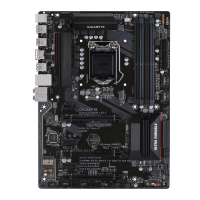
Do you have a question about the Gigabyte GA-Z270XP-SLI and is the answer not in the manual?
| Component for | PC |
|---|---|
| Power source type | ATX |
| Motherboard chipset | Intel® Z270 |
| Audio output channels | 7.1 channels |
| Motherboard chipset family | Intel |
| Linux operating systems supported | Yes |
| Windows operating systems supported | Windows 10 Education, Windows 10 Education x64, Windows 10 Enterprise, Windows 10 Enterprise x64, Windows 10 Home, Windows 10 Home x64, Windows 10 Pro, Windows 10 Pro x64, Windows 7 Enterprise, Windows 7 Enterprise x64, Windows 7 Home Basic, Windows 7 Home Basic x64, Windows 7 Home Premium, Windows 7 Home Premium x64, Windows 7 Professional, Windows 7 Professional x64, Windows 7 Starter, Windows 7 Starter x64, Windows 7 Ultimate, Windows 7 Ultimate x64, Windows 8, Windows 8 Enterprise, Windows 8 Enterprise x64, Windows 8 Pro, Windows 8 Pro x64, Windows 8 x64 |
| Memory channels | Dual-channel |
| Memory slots type | DIMM |
| Number of memory slots | 4 |
| Supported memory types | DDR4-SDRAM |
| Maximum internal memory | 64 GB |
| Supported memory clock speeds | 2133, 2400, 2666, 2800, 3000, 3200, 3300, 3333, 3400, 3466, 3600, 3666, 3733, 3800, 3866 MHz |
| Supported memory module capacities | 16GB |
| Processor socket | LGA 1151 (Socket H4) |
| Compatible processor series | Intel Celeron, Intel Pentium |
| PCI Express x1 slots | 3 |
| Number of M.2 (M) slots | 1 |
| RAID levels | 0, 1, 5, 10 |
| Supported storage drive types | HDD & SSD |
| USB 2.0 connectors | 2 |
| Number of SATA III connectors | 6 |
| USB 3.2 Gen 2 (3.1 Gen 2) connectors | 0 |
| USB 2.0 ports quantity | USB 2.0 ports have a data transmission speed of 480 Mbps, and are backwards compatible with USB 1.1 ports. You can connect all kinds of peripheral devices to them. |
| BIOS type | EFI AMI |
| ACPI version | 5.0 |
| BIOS memory size | 64 Mbit |
| Depth | 305 mm |
|---|---|
| Width | 225 mm |
FCC Part 15 compliance statement for Class B digital devices.
Copyright information and how to identify motherboard revision.
Diagram and identification of motherboard components.
Lists the items included in the motherboard package.
Important safety and installation precautions for hardware.
Details on supported CPUs, chipset, memory, graphics, audio, and LAN.
Specifications for PCI Express slots and multi-GPU technologies.
Information on M.2, SATA Express, and SATA connectors.
USB ports and internal motherboard connectors.
Description of rear panel connectors and I/O.
I/O controller chip and hardware monitoring features.
BIOS features, APP Center, bundled software, and OS compatibility.
Motherboard form factor dimensions.
Step-by-step guide for CPU installation.
Guidelines for installing RAM modules.
Explanation of Dual Channel memory setup.
Procedures for installing expansion cards.
Setting up AMD CrossFire/NVIDIA SLI.
Descriptions of PS/2, USB, and HDMI ports.
Enabling SLI and details on the RJ-45 LAN port.
Descriptions of various audio output and input jacks.
Table listing internal connector pin assignments.
Details on ATX 12V and main power connectors.
Information on CPU and system fan headers.
Details on CPU_OPT, pump, SATA Express, and SATA connectors.
Information on M.2 connector for SSDs and RAID.
Bandwidth sharing notices for PCIEX4, M.2, and SATA connectors.
Pin assignments for front panel power and reset buttons.
Pin assignments for front panel audio connectors.
Descriptions and pin assignments for S/PDIF, USB 3.1, and USB 2.0 headers.
Information on TPM, Thunderbolt, and Parallel Port headers.
Details on serial port, CMOS battery, and clearing CMOS.
Explanation of system status LEDs for CPU, DRAM, VGA, BOOT.
Description of the startup screen and how to access/upgrade BIOS.
Overview of M.I.T. section and CPU frequency settings.
Detailed CPU core frequency and ratio settings.
Configuration for Intel Turbo Boost and Hyper-Threading.
Settings for CPU power saving states.
CPU thermal protection, Speed Step, and XMP memory profiles.
Adjusting memory multiplier and timing modes.
Enabling memory channel and rank interleaving.
CPU/Chipset voltage settings and PC health monitoring.
PCI Express link speed and benchmark enhancement.
Fan speed and temperature control settings.
Options for controlling fan/pump speeds.
Displays system info; allows language, date, and time settings.
Settings for boot order, security options, and fast boot.
SATA, VGA, USB, PS2, and Network boot support.
CSM Support and LAN PXE boot options.
UEFI/Legacy ROM options for storage and PCI devices.
Setting administrator and user passwords.
Settings for onboard peripherals like RAID, LEDs, PTT.
TPM and Intel BIOS Guard security features.
Network stack settings and NVMe configuration.
USB support and SATA controller settings.
SATA mode selection (RAID/AHCI) and power management.
Settings for chipset features like VT-d, graphics, audio.
Enabling/disabling onboard graphics, audio, and LAN.
Power management settings like ASPM.
System state after AC power loss and wake-up settings.
Keyboard/mouse wake-up, power-on password, ErP.
Power button behavior and scheduled power-on.
Options for saving settings and exiting BIOS.
Loading default settings and managing profiles.
Guide to configuring RAID arrays and SATA controllers.
Steps for using the EZ RAID feature.
Steps for UEFI and legacy RAID ROM configuration.
Guide to installing OS and SATA drivers.
Installing motherboard drivers using Xpress Install.
Regulatory notices, environmental commitment, RoHS, and WEEE directives.
Explanation of the WEEE symbol.
FCC compliance statement for Class B digital devices.
IC compliance statement for Class B digital apparatus.
Company contact details and website addresses.
Link to GIGABYTE's online support portal.
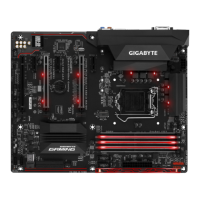

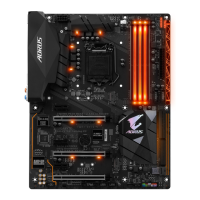
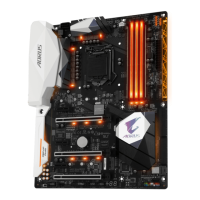
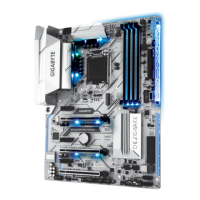

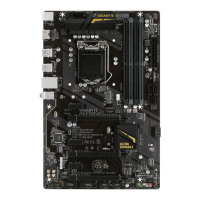
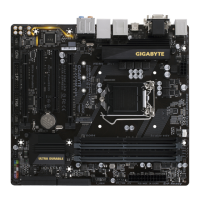
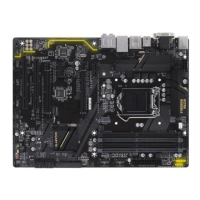
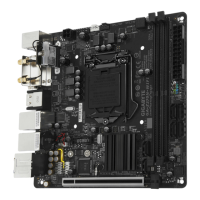


